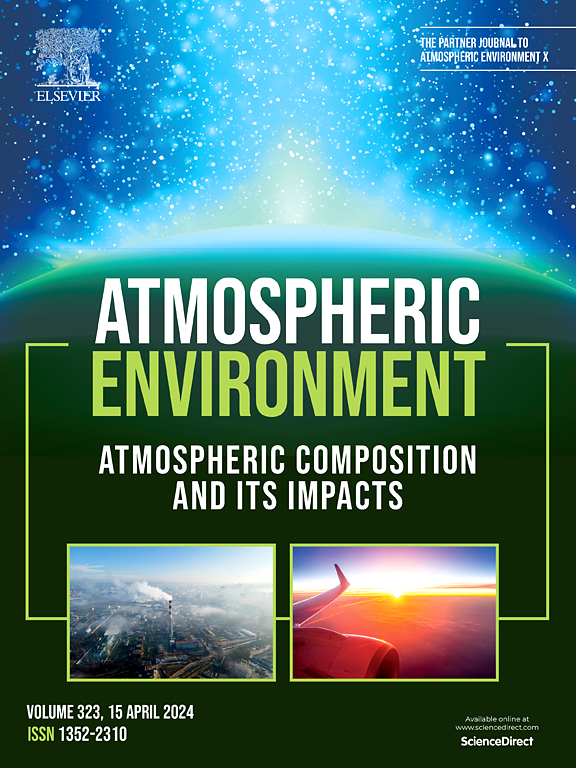Contribution of Vehicular Evaporative S/IVOC emission to SOA formation in China
IF 4.2
2区 环境科学与生态学
Q2 ENVIRONMENTAL SCIENCES
引用次数: 0
Abstract
Vehicle evaporative emission is an essential source of air pollution in urban areas, and semi- and intermediate volatile organic compounds (S/IVOC) in the emission are important precursors of SOA. Incorporating S/IVOC inventories can significantly enhance the accuracy of SOA simulations in air quality models. In this paper, we established an inventory of evaporative S/IVOC emissions from light-duty vehicles covering mainland China with a resolution of 50 km × 50 km, based on the emission factors and distribution patterns of each evaporative emission process. We further updated the weights of bins in the two-dimensional volatility basis set (2D-VBS) following the measured proportion of the evaporative S/IVOC component, and simulated its contribution to secondary organic aerosol (SOA) generation using the Community Multiscale Air Quality Modelling System (CMAQ). Results indicate that the total evaporative VOC and S/IVOC emissions from light-duty vehicles in China in 2022 were 269.71 Gg/yr and 70.73 Gg/yr, respectively. Higher emissions were found in the North China Plain, with particularly elevated emissions in Beijing, Shanghai, and Guangzhou, where the maximum S/IVOC emission intensity reached 336.5 kg/km2/yr. We also found that the unit S/IVOC emissions contributed 11.9 times more to SOA formation than unit VOC. The evaporative S/IVOC emission resulted in a maximum increase in SOA concentrations of 0.178 μg/m3, which occurred in summer in western Liaoning province. Spring exhibited the highest SOA formation, with an average rise in national concentration of 0.013 μg/m3. The meteorological conditions in winter were more conducive to S/IVOC-contributed SOA formation, showing a relatively high concentration increase (0.011 μg/m3 on average) and the largest radiant range (reaching Hexi Corridor and Xinjiang Province) with the least emission of four seasons. The average contribution of the evaporative S/IVOC emission to total anthropogenic SOA was 0.5%, with up to 0.8% contribution in the North China Plain and Eastern China, including Shanghai, Liaoning, Jiangsu, Shandong, and Anhui provinces. The affected areas overlap with populated areas, thus the health impacts of SOA formation in these regions need to be taken seriously. This research fills the gap in light-duty vehicle evaporative S/IVOC emissions inventory and emphasizes its importance for SOA formation.

求助全文
约1分钟内获得全文
求助全文
来源期刊

Atmospheric Environment
环境科学-环境科学
CiteScore
9.40
自引率
8.00%
发文量
458
审稿时长
53 days
期刊介绍:
Atmospheric Environment has an open access mirror journal Atmospheric Environment: X, sharing the same aims and scope, editorial team, submission system and rigorous peer review.
Atmospheric Environment is the international journal for scientists in different disciplines related to atmospheric composition and its impacts. The journal publishes scientific articles with atmospheric relevance of emissions and depositions of gaseous and particulate compounds, chemical processes and physical effects in the atmosphere, as well as impacts of the changing atmospheric composition on human health, air quality, climate change, and ecosystems.
 求助内容:
求助内容: 应助结果提醒方式:
应助结果提醒方式:


